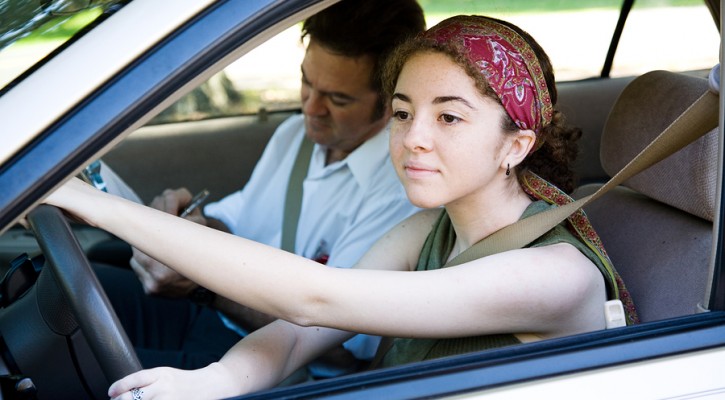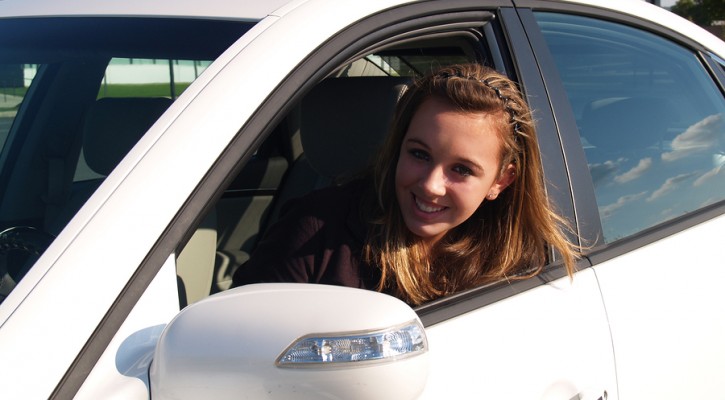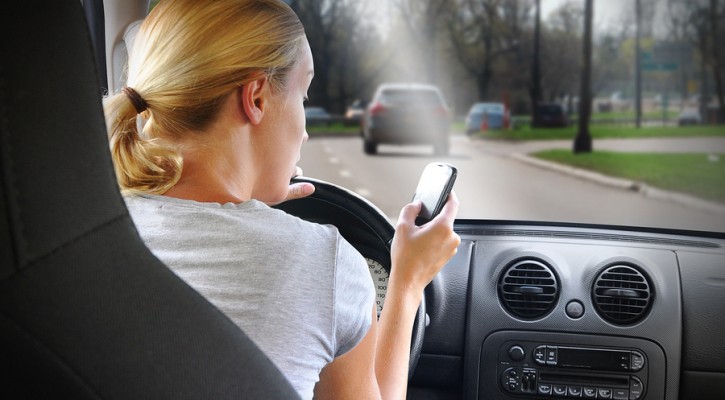Category Archive: Parents

How to Get a Florida Learner’s Permit
December 5, 2008
So, you’re fifteen years old and ready to get your Florida Learner’s Permit. Congratulations! You are about to take the first step towards increased freedom and independence – but along with that comes increased responsibility. You’ll need to follow certain steps to get your learner’s permit. Here’s how to make the process as smooth as possible.
First, try to plan ahead. Many new drivers want to get their regular driver’s licenses as soon as they turn 16, but you need to have held a learner’s license for at least one year without any traffic convictions before you apply for your operator’s license.
When you go to the DMV, you’ll need appropriate identification. You’ll also need a certificate of completion for the Traffic Law and Substance Abuse Education course. Your parent or legal guardian will need to sign a consent form. Then you’ll be ready to take the written test!
The written test consists of 20 questions about road rules and 20 questions about road signs. You must answer 15 out of 20 questions correctly to pass each test. Then you’ll take a vision test and a hearing test right there at the DMV.
Once you earn your learner’s permit, you must comply with certain restrictions to keep it. You can never drive alone with a learner’s permit, no matter how old you are. You may only drive during daylight hours during the first three months and until 10 p.m. thereafter, always with a licensed driver who is at least 21 years old and occupies the front passenger seat.
You’ll need to follow all traffic laws carefully, both to develop safe driving habits and to avoid further restrictions. If you receive a moving traffic conviction while you have a learner’s license, the one-year period you are required to hold your learner’s license will be extended for one year from the date of the conviction or until you are 18 years old, whichever happens first.
If you receive six points on your driving record within a 12-month period, your driving privileges are automatically restricted to business purposes only for 12 months or until you are 18, whichever happens first. If you receive additional points during this restricted period, the restriction is extended 90 days for each additional point.
In addition, drivers under the age of 21 with a blood alcohol level of .02% or more will have their license immediately suspended for six months. This administrative action is for a first offense; a second offense will result in a one-year suspension. Refusal to submit to testing results in a suspension of twelve months for a first offense and eighteen months for a second offense.
If you are truant in your school attendance, your driving privilege will be suspended until you provide proof you have attended school for 30 consecutive days.
As you can see, once you get your learner’s permit, you’ll need to drive very safely to keep it and to earn your operator’s license. Taking this responsibility seriously will go a long way towards earning your place in society as a trustworthy adult.

Why You Should Take a Practice Permit Test Course
December 4, 2008
When teens are asked why they want their driver’s licenses, they often answer, “for freedom and independence.” But even getting a permit can be difficult, and if you don’t comply with certain restrictions on your permit and license, the freedom and independence you wanted so much and worked so hard for can quickly disappear. That’s why skimming the handbook and memorizing a few facts that are quickly forgotten as soon as you pass your written test is not a good use of your time. You should take a practice permit test course, and you can do so online, from the comfort of your home.
It is difficult to learn enough from the handbook to pass the written test at the driver’s license office. Simply reading the handbook is not enough. It is almost impossible for anyone, even your parents, to anticipate every type of question that might be asked on the test. The questions on the written test are typically pulled from a database of over 500 questions. Every test is random, so talking to your friends about what their tests were like won’t help you. And questions on the test are written with the assumption that you understand the entire handbook, so knowing just a few parts of the handbook well won’t be sufficient for you to achieve the minimum passing score on the test, which is usually 80%.
A practice permit test course helps you pass the written test because it replicates the experience of taking the test at the driver’s license office. Often, people are surprised when they take an online written test because they realize how little they remember even after reading the handbook. You don’t want that surprise when you’re already at the driver’s license office! Many states charge you a fee and make you wait several days to retake the test if you fail. That means you have to get your parent or guardian to make the trip all over again. With an online practice course, you can take tests as many times as it takes to feel totally comfortable with the material. Some courses even offer a guarantee that you will pass your test at the driver’s license office after passing the practice tests a certain number of times.
But an online DMV practice permit test course does more than help you pass the written test to get your learner’s permit. It helps you remember information that will help you keep your driver’s license and make you a safer driver. For example, many states now have graduated licensing programs that specify a variety of laws for new drivers, including curfew hours. If you don’t know those laws, you won’t follow them – and not following them could mean losing your permit or license. And of course, if you don’t know and follow the rules of the road, you could get tickets or worse, have a crash that results in property damage, injury or death. Even worse than losing your license would be causing harm to someone else, perhaps one of your friends, or losing your own life.
Hopefully, you’ll have your driver’s license for many years. Why not invest in it so you’ll have a smooth start?

Buying the Right Car for Your Teen Driver
December 1, 2008
Most parents instinctively know that buying a sports car for their teen drivers would probably be a big mistake. A high-horsepower, easily maneuverable car could be a deadly temptation for a teen, especially combined with the teen’s feeling of invincibility and risk-taking behavior. But if your child is pressuring you for a sporty convertible, here’s some ammunition for saying no.
The first years of driving are very risky, no matter what your teen is driving. Teen drivers have the highest death rates in car crashes of any age group. Motor vehicle crashes are the number one cause of death among Americans aged 15-20.
And some cars are simply more deadly than others. According to the Insurance Institute for Highway Safety, small sports cars such as the Ford Mustang, the Chevrolet Corvette, and the Pontiac Sunfire have the highest death rates in crashes. “Vehicle choice does matter,” says J. Peter Kissinger, president and CEO of the AAA Foundation for Traffic Safety. “Use it as another means to have a conversation with your teen.”
For more support, go online with your teen and check out insurance rates for their vehicle of choice. Explain that adding the teen to your policy will raise your rates no matter what she or he is driving. “Having a young driver added to your insurance will raise the rate 50 to 100 percent,” says Jeanne Salvatore, vice president of consumer affairs for the Insurance Information Institute. But the rates are much higher for vehicles considered high-risk.
Lastly, and perhaps most important, you are still the parent. Getting a driver’s license is an exciting rite of passage for your teen, but this new level of independence doesn’t end your primary job as a parent – to make the safest possible choices for your child.
Many parents, swinging to the other end of the pendulum, think an ancient clunker shaped like a tank would be safest for their teens. But experts demur, for two main reasons. First, the poor acceleration power of an older vehicle both makes it more difficult for teens to accelerate in some driving situations, such as lane changes and highway merges, and tempts them to simply drive faster to make up the difference in accelerating power. Second, older vehicles don’t have the benefit of modern safety features, such as airbags and electronic stability control.
So, with these two vehicle types out of the question, how do you select a safe car for your child?
First, consider size. A mid- or larger-size car could mean the difference between life and death in a crash. Though that’s true for drivers and passengers of all ages, it’s especially true for teens because of the high likelihood of driver error, which often leads to a crash.
Former National Highway Traffic Safety Administration chief Jeffrey Runge, a former emergency room physician, recommends vehicles weighing at least 3,300 pounds for teen drivers. This is a good guideline for parents who are unsure of which vehicle class to shop in for their teen’s car.
Here again, some parents go to the extreme and choose an SUV for their teen drivers. But most safety experts think this a mistake. SUVs have a high center of gravity and thus are more likely to roll over than other vehicles. Drivers aged 16 to 20 are more than twice as likely to be involved in a rollover in an SUV than older drivers. Second, SUVs can be challenging to handle in an emergency, making them a better choice for those with more driving experience than teens. And SUVs carry more passengers, which make the vehicle more unstable and can be highly distracting for a teen driver.
A second important consideration in the choice of a car for your teen is crash protection. Although a vehicle with front driver and passenger airbags should be relatively easy to find, consider side airbags that protect the head and chest. You’ll have to do some research, because not all car manufacturers approach this the same way. “The trend is now more curtain airbags for the head and more door-mounted for the chest,” says Mark Krawczyk, consumer information director for the National Highway Traffic Safety Administration.
Electronic stability control helps drivers maintain control of their vehicles during extreme steering maneuvers. Since teens are prone to overcorrecting in an emergency, it may be well worth it. The feature “cuts single vehicle crashes by more than half in our studies,” says Susan Ferguson, senior vice president of research for the Insurance Institute for Highway Safety.
Anti-lock brakes (ABS) also allow a driver to maintain control of the steering during emergency braking situations. Be sure to teach your teen to use anti-lock brakes properly in an emergency – hit the brakes hard and don’t let up. The pulsing vibration you feel means the ABS are working; some drivers instinctively let up on the brake when they feel it, so it’s important to practice not letting up on the brake so your teen will do the right thing in an emergency situation.
If your budget allows, check out the more advanced crash-avoidance technologies found on newer modes, such as emergency brake assist, lane departure warnings, and blind spot warnings.
And don’t forget the basics. All vehicles come with safety belts – make sure your teen wears them on every trip. Don’t forget to check the tires, headlight and taillights on a regular basis to make sure they’re in good working order.
Lastly, when buying a car for your teen, realize that you are entering a new era of driver training. Your teen will be excited and very probably overconfident in her or his abilities. Be sure to train them in the vehicle you choose. Require that your young driver demonstrate responsible behavior and meet experience requirements in diverse road conditions before heading out on the road alone. Check up on them frequently. Sign a teen driving contract to make sure your teen explicitly understands your requirements.

Nearly Half of Teens Admit to Texting While Driving
December 1, 2008
While recent studies indicate that teens agree that texting while driving is dangerously distracting, a significant number still continue to do so.
In a 2007 study by SADD (Students Against Destructive Decisions) and Liberty Mutual Insurance Group, 37% of teens rated text messaging as “extremely” or “very” distracting. A statewide study by AAA Colorado showed teens feel even more strongly about the risk:
- 97% think text messaging while driving is dangerous.
- 91% think there should be legal limits on cell phone use, including text messaging, while driving (these laws do exist in many states; some target only teens, while others extend to all drivers).
- 74% admitted not knowing the law regarding cell phone use and driving in Colorado (meaning education and enforcement should be a priority).
- 73% said strict penalties, such as losing their licenses, would make them less likely to text while driving.
But in a separate AAA study, 46% of teens admitted to texting while driving. And in the Colorado study, the numbers were even higher – 51% confessed to it, and 38% admitted taking their eyes off the road while text messaging.
Many states have or are considering laws prohibiting teens from texting while driving. California’s law went into effect on July 1. California Highway Patrol spokesman Tom Marshall said that officers have to spot another offense before stopping teen drivers who are text-messaging because the law classifies texting and driving by teens as a secondary offense.
After the Colorado survey, state troopers planned to increase education efforts and continue cracking down on drivers who break the existing law, which makes it illegal for teens with an instruction permit to use a cell phone, whether talking or texting, while driving.
Whether the law supports them or not, parents need to take a stand with their teens against text messaging. Teens know the danger exists, but the feeling of invincibility and the desire to maintain close contact with friends that are typical of this age allows them to ignore it. Many teens won’t comply with a directive against text messaging while driving unless they know there are consequences. In the SADD/Liberty Mutual study, 52% of teens who say their parents are unlikely to follow through on punishment if they drive and text will continue to do so, compared to only 36% of teens who believe their parents would penalize them.
To educate your teen about the risk, ask your teen to tell you how texting and other distractions would affect your driving as you drive with the teen as a passenger. Would you have missed that traffic light? Rear-ended a stopped school bus? Veered over the center line? Share the following tips (be sure to follow them yourself to set a good example):
- Turn off your cell phone while driving. Let voicemail capture your voice and text messages.
- Pull off the road safely and stop if you need to send a text.
- Recognize that wanting to be available at all times can be a habit that will negatively affect your driving at best and could cause a terrible crash at worse. Let friends and family know that you won’t be responding to text messages while driving.
- If you just can’t resist texting and driving, put your phone somewhere you can’t reach it, like the trunk of your car.
Parents often want their children to be available by phone at all times, but you are putting your child at great risk by expecting an instant response to your “Wher R U?” text. Establish regular check-in times when your teen won’t be driving, and resist the urge to text at other times.
Review your teen’s cell phone bill with them regularly to see if they are texting at times when they are likely to be driving. Specify the penalty for violating the rule ahead of time, and be sure to apply the punishment consistently if your teen breaks the rule. Teens should sign a Parent Teen Driving contract in which they agree to focus all of their attention on driving during each and every trip.
Whether your state has a graduated driver’s licensing law or not, use a Driving Log to keep track of the hours you spend on your teen’s driver training. Make a note in the log to review common driver distractions, including texting, during each lesson.
If you’re wondering whether you could simply disable the cell phone while your teen is driving, thereby reducing the need for your policing efforts, wonder no more – cell phone jammers are illegal. Though the law, enacted in 1934, was mainly written to protect radio and television broadcasters from the pirating of their airwaves, the penalties for having the technology are severe – a fine up to $11,000 and a jail term of up to one year.

What is More Dangerous than Being a Teen Driver? Being a Teen Who Rides with One!
November 30, 2008
Many parents know that training their teen to be a good driver is critical to the teen’s safety. But parents also need to limit the number of passengers who ride with their teen and pay attention to the teen drivers their children ride with as passengers. Studies show that the presence of one passenger doubles the fatal crash risk for a teen driver, and the risk increases with each additional passengers. Forty percent of teen motor-vehicle deaths involve passengers.
Motor vehicle crashes are the leading cause of death among American teenagers, accounting for 36% of all deaths of teens aged 15-19. Two-thirds of the deaths of passengers in this age group happen in cars driven by other teenagers.
In a study at Johns Hopkins School of Public Health, researchers discovered that:
- A 16-year-old carrying one passenger is 39% more likely to get killed than one driving alone.
- The likelihood increases 86% with two passengers and 182% with three or more.
- The rate for 17-year-olds is still higher – 48% with one passenger, 158% with two passengers, and 207% with three passengers.
A study by the University of Michigan Transportation Institute said that the most significant risk issues for teen drivers are teen passengers, driving on weekends and driving at night. In addition, the researchers found that 56% of the teen drivers in the study had been in at least one crash.
Even teens seem to understand the risk. A 2008 survey by Erie Insurance Company found that although 91% of teens think they are driving safely, only 34% could say the same of their friends. Ninety-seven percent of the teens surveyed said they had seen other teen drivers participating in risky behaviors such as speeding and not wearing seatbelts. Forty-eight percent said they are easily distracted when friends are passengers. In a separate study by the Children’s Hospital of Philadelphia and State Farm, the number was even higher – 94% of teens said that passengers distracted the driver in some way; for example, by talking on a cell phone or listening to loud music.
In addition to the distraction caused by cell phones and loud music, a study by the National Institute of Child Health and Human Development of the National Institutes of Health found that teenage drivers of both genders were more likely to tailgate and exceed the speed limit if there was a teenage male passenger in the front seat. In fact, when a male passenger was in the vehicle, a quarter of teenage drivers exceeded the speed limit by at least 15 miles per hour. Also, female teen drivers were slightly more likely to tailgate if there was a female teen passenger in the vehicle with them.
Increasing the risk still further is the phenomenon of teen passengers not using seat belts. Studies show that even teens who buckle up as drivers often neglect to wear a safety belt when they are passengers in another teen’s car.
Researchers from Meharry Medical College in Nashville, TN analyzed data from national youth risk behavior surveys collected in 2001 and 2003 from 12,731 black, white and Hispanic high school students aged 16 and older. The study found that 59% of the teens always used safety belts while driving, but only 42% always buckled up as passengers. Only about 1/3 of the students surveyed said they always wore safety belts whether driving or riding as a passenger.
Passenger restrictions for teen drivers already exist as part of Graduated Licensing Laws in many states, and research by the National Highway Traffic Safety Administration indicated that passenger restrictions reduce crashes among 16-year-old drivers, so familiarize yourself with the laws in your state. If restrictions exist, be sure to enforce them as part of your house rules. If there are no restrictions, review the requirements in a few nearby states so you can create your own. Be sure to investigate the teen drivers your child might ride with – talk to the teen’s parents about the driver training the teen has received, and address any indiscretions (such as peeling out of your driveway) promptly. Make sure your teen knows the importance of wearing a safety belt, whether driving or riding as a passenger, and teach your teen not to distract other drivers. Review teen driver safety topics with your teen on a regular basis – use this newsletter for ideas.
Whether legislated or not, restrictions on passengers for teen drivers are necessary for your teen’s safety. Traffic deaths for teens have decreased significantly since passenger and other restrictions were added to Colorado’s Graduated Driver Licensing (GDL) law in 2005. In the three years prior to the enactment of passenger restrictions, more than 100 drivers and passengers aged 15-20 died on Colorado roadways each year. In 2006, the year after the restrictions went into effect, the number of teens killed dropped to 72, and in 2007, the number dropped again to 51- a 50% drop since 2003. These restrictions must be enforced to make a difference – by parents as well as by law enforcement.
“We will continue to be vigilant in enforcing the state’s GDL law, but we also need parents’ help in making sure the law is followed at home,” said Col. Mark Trostel, chief of the Colorado State Patrol. “Sign a parent-teen driving agreement, don’t allow your teenager to have too many passengers during their first year of driving, establish a driving curfew, make sure they buckle up every time, and set yourself as an example.”
